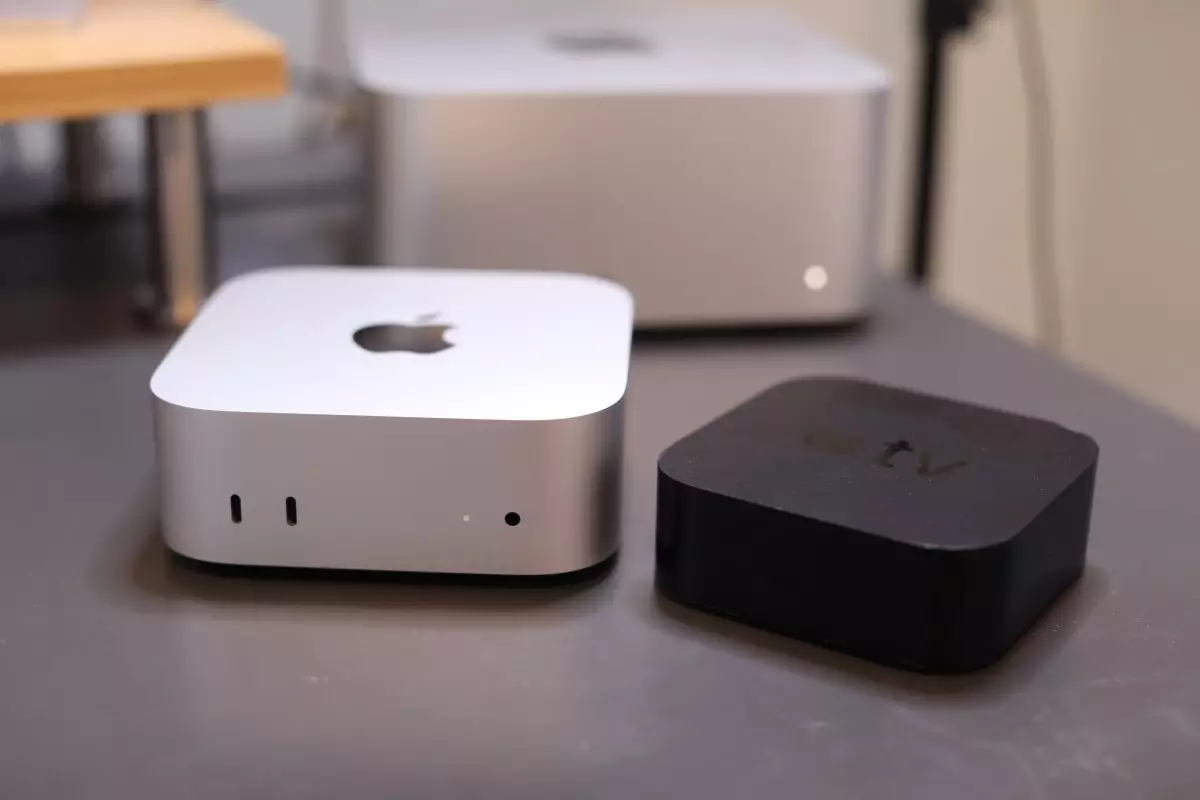When Apple unveiled its latest Mac Mini, it ignited a mixture of excitement and skepticism among tech enthusiasts. After years of operating practically unscathed within Apple’s ecosystem, the Mac Mini is now back under the spotlight, reigniting discussions about its place within the Mac desktop lineup. With prominent distinctions between the iMac, Mac Pro, and the newer Mac Studio, the Mac Mini finds itself uniquely positioned — both as a tool for creatives and as an accessible entry point for average consumers.
Historically, the Mac Mini has often lingered in the background, overshadowed by its flashier siblings. While Apple has periodically breathed new life into the iMac with aesthetic and performance evolutions, the Mac Mini remained largely unchanged, retaining the same design since 2010. With Apple’s M series chips debuting in 2020, a spark of hope ignited for the Mini, integrating first-party silicon that promised significant enhancements. However, much was left to be desired in the design department until the recent announcement, which revealed a long-overdue redesign.
The transformation of the Mac Mini’s design has sparked debates over the product’s aesthetics. At a size of 5 x 5 x 2 inches, it’s larger than many initially expected, diverging from rumors suggesting it would mirror the dimensions of the Apple TV. The parallel design elements with the Mac Studio create a cohesive identity within their product range while also hinting at a more professional appeal. Its brushed aluminum body and rounded corners reflect contemporary design trends but remain somewhat simplistic.
One of the most scrutinized aspects of any computer is its port availability. The new Mac Mini, while sleek in design, compromises slightly on connectivity — a trade-off for its compact size. While it includes three Thunderbolt ports and two USB-C ports, it significantly lags behind the Mac Studio, which boasts a more robust selection. However, a notable advancement is its support for Thunderbolt 5, a feature that adds excitement for power users demanding high-speed data transfers.
Interestingly enough, Apple shifted the power button’s location to the bottom of the device, evoking mixed reactions. Users have compared this maneuver to the infamous design choice of the USB-C Magic Mouse, where the charging port’s placement renders it unusable when plugged in. Despite its defensibility, this decision still contributes to usability challenges for customers after years of established conventions.
More importantly, the Mini operates with a sizing advantage over the Studio, making it a more practical choice for users who desire a dedicated system without sacrificing too much desk space. For businesses and consumers alike, this balance of size and power could make the Mac Mini an attractive option, particularly for home offices where real estate is limited and aesthetic appeal matters.
Perhaps one of the most contentious points of discussion regarding the new Mac Mini centers around its pricing strategy. With a base price of $599, it hosts the M4 chip, which performs admirably for everyday tasks. However, consumers looking to upgrade to the M4 Pro version quickly see cost escalation, with configurations pushing near $2,300—situating it controversially between the iMac and Mac Studio in terms of both performance and price.
For context, the entry-level M4 iMac starts at $1,299 and incorporates display hardware, highlighting an important selling point for consumers weighing their choices. When price and performance engage in a cautious tango, potential buyers may start to question the Mac Mini’s purpose: is it truly an entry-level device, or is it a stepping stone between the iMac and the more complex Mac Studio?
Identifying the target market for the Mac Mini is where the analysis becomes intriguing. Clearly, this machine is crafted for those who already possess a monitor and wish to avoid the overwhelming cost of a Mac Studio. Its compact size makes it an appealing option for desktop use without the burdens of a built-in display. Creatives who value the ability to select their monitors but do not require the heavyweight power of the Studio could find this machine to fit their needs.
However, potential buyers in the consumer market must carefully consider their existing setups and future needs. Those who prioritize mobility might gravitate towards a MacBook for effortless portability. The allure of the new Mac Mini lies in its combination of sufficient power and affordability, tailored specifically for those looking to upgrade their desktop experience without unnecessary complexity.
To summarize, the new Mac Mini is a device with noteworthy features and revisions that signify a significant step forward. However, its ambiguous position within Apple’s desktop range leaves potential users contemplating their best course of action. A careful evaluation of personal performance needs, paired with budget considerations, will ultimately dictate who emerges as the Mac Mini’s definitive user.

